With evolving technologies, google algorithm updates, and tools, keeping up with current digital marketing trends can be overwhelming. You can increase visibility and organic traffic through SEO. Build a brand with just your social media presence. Make your work-flows easier with AI. Sell more with a well-managed PPC campaign. But, how do you know what to focus on?
The trick is in the adage: work smarter, not harder. Our digital marketing agency has to stay on top of current and future trends – so we’ve done the heavy lifting and research for you. As we move toward 2024, here are some of the digital marketing trends we’re keeping our eye on.
The Latest Digital Marketing Trends for 2024
1. Artificial Intelligence (AI) Trends
Two years ago, artificial intelligence was in its nascent stage, but as we go through 2024, it’s become increasingly more clear how AI-driven marketing strategies can provide value for a wide variety of businesses.
Take DALL-E, for instance, which has gained widespread attention and continues to grow in popularity. This innovative AI tool generates images in response to textual prompts, providing digital marketers with a unique alternative to stock photos for blog articles and landing pages.
ChatGPT is another widely recognized AI tool that offers advanced text-based solutions for generating diverse written content. Capable of writing social posts, and blogs, or even creating digital marketing strategies, ChatGPT is a remarkable resource that can significantly enhance your digital marketing approach. Over the last year, ChatGPT has improved greatly, offering a wider variety of high-quality models, and has gained more compatibility with the explosive growth of add-ons within the ChatGPT library.

Both DALL-E and ChatGPT are products of OpenAI, a company specializing in artificial intelligence research and deployment.
Although DALL-E and ChatGPT currently serve as research tools in the machine learning domain, numerous free and paid alternatives cater specifically to digital marketers. For example, Jasper employs AI for copywriting tasks. While it’s not recommended to replace your content team entirely with AI, tools like Jasper can effectively streamline your content marketing initiatives, assisting with social media posts or landing page copy when inspiration is lacking.
2. Artificial Intelligence Integrations
In 2024, AI-related trends deserve two entire sections. This is because the future trends for AI models like ChatGPT and DALL-E in 2024 are integrating these language models into typical marketing workflows. Just a few of the tools that our marketing team has been working with this last year include Make.com and Birdeye.com, but thousands of integrations could easily integrate ChatGPT into your workflow.
AI Integrated Marketing Trends Examples:
- ChatGPT Chrome extensions like Harper AI give you an all-in-one AI co-pilot. From writing content as needed to extracting SEO keywords, performing SEO audits, and even monitoring competitor websites, Harper is a great example of how AI can be such a powerful sidekick for online marketing.
- Utilizing Make.com, you can create automations that utilize ChatGPT. For example, you can have Make.com automatically sort your inbox, and use Chat GPT to write responses as drafts, summarize the email for you, etc. This way, you can quickly check your email, edit the pre-written responses, or sort your inbox as necessary, almost like having a personal assistant.
- Using Birdeye, you can automatically create personalized responses with AI to reviews on all platforms, saving you time and allowing you to improve customer service, build and maintain a great reputation, and build on existing relationships with your customers.
While the future development of AI and its impact on marketing is getting clearer, one thing is true: AI will continue to rapidly change marketing trends in 2024.
3. Data Collection Trends
Going into 2024, businesses are expected to be more proactive in gathering data through different practices. Forms are one way to find out information about your customers that could support your sales funnel or even influence your next business decision. Even the most basic forms gather valuable information that can help you turn browsers into buyers.
If you use a CRM like HubSpot, you can input customer data like their name, email address, and phone number, then add them to your mailing list or keep tabs on their user activity when they visit your site. This will help your sales team better assess where the website user is in terms of their buyer journey.
4. Digital Advertising Trends
Automated & Smart Bidding in Google Ads
To get the best possible results from a Google Ads campaign, ads specialists analyze every piece of data and continuously tweak and adjust keywords, bids, and ad phrasing. While this obsessive attention to detail gets results, it’s exhausting. A business owner trying to run a campaign may become completely overwhelmed and end up failing.
Enter automated bidding strategies. These allow Google to use machine learning to analyze the tremendous amount of data it has on its users to adjust bids in real-time. Ads specialists can embrace automated strategies while still being in complete control. Automated bidding isn’t anything new – Smart Bidding made its debut in 2016 – but most business owners aren’t aware of what it is or what it does.
It’s important to note that there are still plenty of human strategies involved in optimizing PPC performance. You can’t just set it and forget it and expect results – you still need to test everything, including testing automated bid strategies against each other.
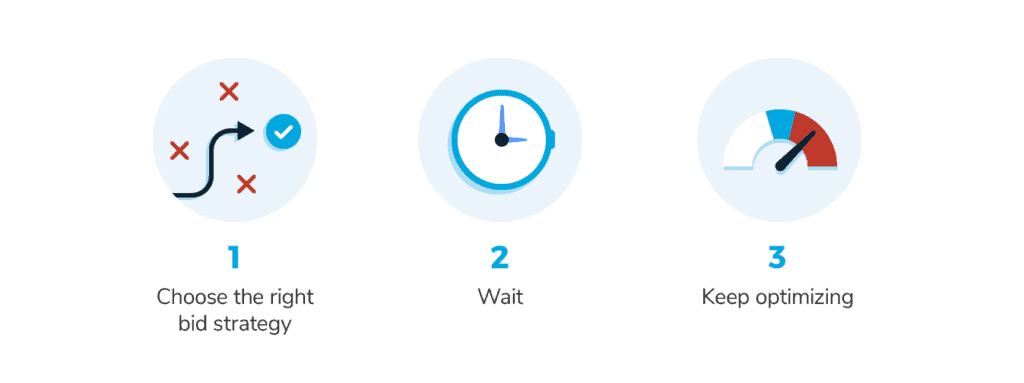
Performance MAX Campaigns
A Performance Max campaign is a Google Ads campaign type designed to optimize advertising results across Google’s properties, including YouTube, Discover, Gmail, the Display Network, and more. It leverages Google’s machine learning capabilities to auto-optimize ad placements, formats, and bidding strategies.
What makes Performance Max particularly compelling for retargeting is its ability to re-engage past visitors or users who’ve interacted with your brand but haven’t converted yet. Since retargeting focuses on audiences already familiar with your business, the ads can be more personalized and relevant. By harnessing the power of Google’s expansive network and machine learning, Performance Max can identify high-potential moments to display your ad to these users, increasing the likelihood of conversions.
5. Google Verified Listings for Local SEO
For businesses that operate on a local level, such as a plumbing company or a veterinary clinic, your Google My Business listing provides valuable information and helps establish your geographical location.
Having a geographically defined service area with a Google My Business listing aids in showing up for “near me” searches. It also lets customers learn more about your business within Google Search results. At a glance, your potential customer can see your open hours, address, and star rating left by other users.
To make sure the information displayed is correct, you should verify your Google business listing and keep the information up to date. The benefits of verifying your business are:
- You can manage your business information in Search, Maps, and other Google properties.
- Verified businesses are considered more trustworthy and reputable than unverified competitors.
- When you verify your business, you’re preventing fraud if someone else tries to act as the owner and claims your listing as theirs.
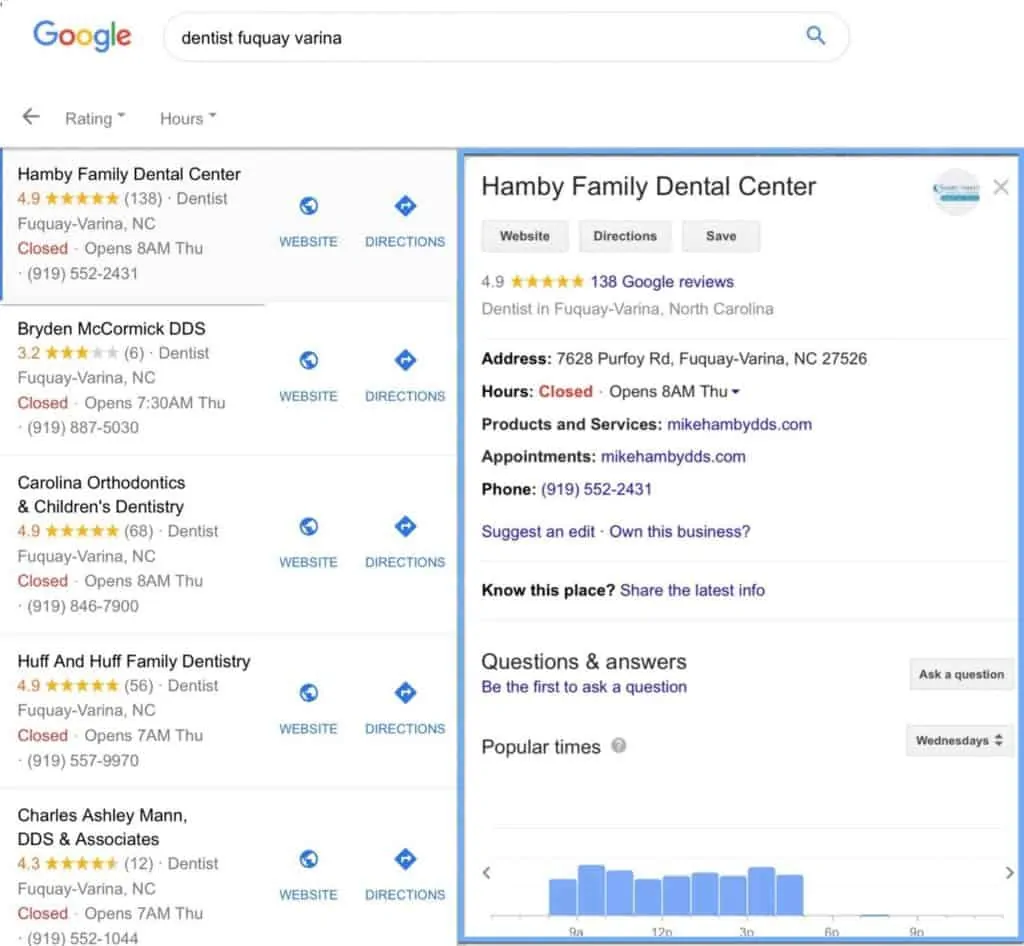
If you’re not sure about your listing, you can check the verification status of your Google My Business listing. If it hasn’t been verified, you can start the simple process to get your business verified by Google.
Having a Hard Time with Verifying Your Google Listing? We’re Here to Help!
6. Voice Search Optimization
Voice-activated digital assistants continue to be huge sellers, and let’s be realistic – some households talk to Alexa, Siri, or Cortana more than they speak to family members. The popularity of voice search both at home and on our phones has led to one of the most significant shifts in using keywords.
Think about it. When we type a search into Google, we phrase it differently than when we use voice assistants for information. For example, a person looking for the nearest Indian restaurant might type “Indian restaurant Raleigh” into Google, but might ask Cortana, “Where is the closest Indian restaurant”. When writing content, choose your keywords based on the questions people may ask when using Siri or Alexa. This can increase your visibility in voice search, and this digital marketing trend shows no sign of slowing down in 2024.
7. Visual Search
Instead of typing a description into Google, users can now upload an image and get information about an item just from a picture. If they’re uploading a plant photo, the search returns species information, while a landmark image will return historical data. When a user searches for a product, it returns similar products and where to buy them. Google Lens, Pinterest Lens, and related search tools turn a user’s camera into a search bar.
How can your business leverage visual search? You can Add high-quality images tagged with descriptive keywords, introduce an image search into your online inventory, and (if your target market uses Pinterest), consider advertising on this platform. Brands that advertise with them get the benefit of boosted search results.
Additionally consider the following:
- having an image sitemap will increase the likelihood of your images being discovered by search engines
- use descriptive file names for images before uploading them to your website
- add alternative text to all images aka “Alt tags”
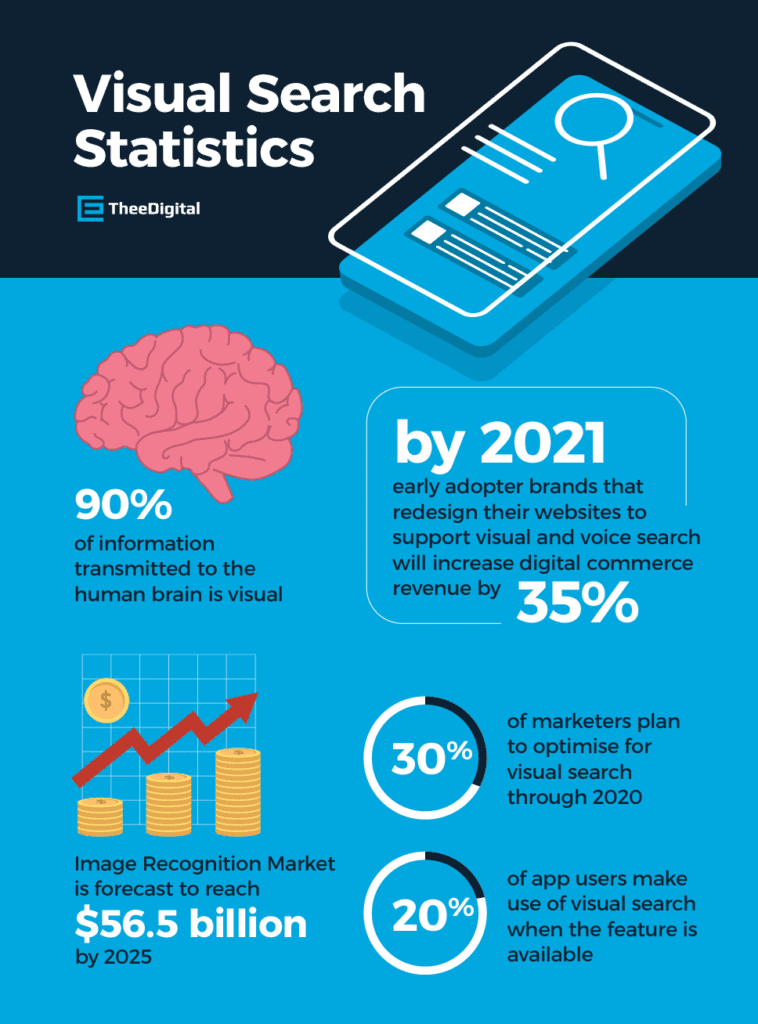
8. Online Reviews
Online reviews can make or break your business’s ability to attract new customers or clients. While any company can talk up its products or services, other consumers can provide real, unbiased reviews. Having many reviews from verified sources can make your business stand out from the competition and start building trust before they even click on your website.
The most useful review for a business to receive is through Google Business. These are the most trusted sources, they’re the most visible, and your Google Business listing lets people call or visit the website. Facebook is another excellent source of online reviews, and you can use them to build a testimonials page on your website, while Yelp is suitable for restaurants, hotels, and recreational businesses.
In 2024, review management platforms have made review-based digital marketing efforts much easier. Platforms like Birdeye allow you to manage your business reputation in a single place. These platforms can help you build reviews quickly by requesting reviews. They can even help you prevent reviews before they happen, communicate with customers, and easily respond to reviews.
There are also industry-related review websites that shouldn’t be ignored:




To increase the number of reviews you have, provide your customers with a simple link to your Google Business listing to leave a review. Even if they’re all 5-star ratings, businesses with few reviews get fewer conversions than companies with 100+ reviews, even if a few of them aren’t great.
9. Real-Time Messaging Platforms
Real-time messaging platforms have become a great way to reach customers efficiently. In the age of instant gratification, you need to do everything you can to provide prospects with as much information as possible – else risk losing them to a competitor. Expect to see more of these platforms pop up as businesses look to engage and provide better customer interactions.
10. Google Analytics 4
Universal Analytics is no more. Don’t fret! Google Analytics 4, or GA4, is a new and improved version of the beloved UA – with a few more bells and whistles.
In GA4 you have the option to link to Google Merchant Center, Google Optimize, and BigQuery natively and for free! You can also add your custom reports to the navigation menu, making it easier to access the same view. You’ll also have access to anomaly detection, predictive analytics, deeper attribution models, and more!
We recommend getting acquainted with GA4 as soon as possible.
Additionally, with the rise of mobile and voice searches, Google Analytics 4 also offers more in-depth tracking for these platforms. This allows businesses to better understand and optimize their marketing efforts for various devices and search methods.
GA4 offers improved data privacy measures, which is becoming increasingly important as data protection becomes a major concern for internet users. By staying up-to-date with GA4, businesses can ensure they are compliant with data privacy regulations and demonstrate their commitment to protecting user information.
11. Cross Selling
Cross-selling is used on a check out page on an ecommerce website to give additional offers inside the users account.
Is a customer about to purchase a lawn mower from your site? You could offer a discounted edge-trimmer to go right along with it.
Make it an easy on-click for customers to add additional products to their cart based on what is already being purchased and include a discount to sweeten the pot a little bit.
12. Cross-Channel Marketing
Cross-channel marketing, also known as omnichannel marketing, is a strategic approach that involves coordinating and integrating marketing efforts across multiple channels and platforms to create a unified and seamless brand experience for consumers. Modern consumers engage with brands through various touchpoints, such as different social media platforms, email, websites, physical stores, and mobile apps.
Cross-channel marketing allows businesses to tailor their messaging and content for each channel while maintaining consistency in branding and overall strategy.
13. Interactive Content
Adding interactive sections to your website is a great way to provide value for visitors, get them to engage with your website, and learn more about them.
Suppose you were a realtor and added a mortgage calculator to your website. You’re offering value to your visitors while also learning more about them based on the data being inputted into your calculator.
Examples of interactive marketing include:
- Assessments like quizzes
- Polls and surveys
- Calculators
- Contests
- Gamification
- 3D Builders

14. Page Speed
A slow-loading page is the number one reason users leave a website within a minute of landing on the page (also called the bounce rate)—even a second or two of a delay in how the page loads can negatively affect your conversion.
The good news is you can speed up your page load times pretty easily. First, optimize your images and make sure there are no large image files. If there are, compress them to where they are less than 100KB.
Next, reduce the number of internal redirects, specifically redirect chains that go through several redirects before landing on the correct URL and internal links to redirects. Reducing these can speed up your authority in Google and your page load speeds (both good things).
15. Affiliate Marketing
Affiliate marketing has continued to grow in the last few years and is showing no signs of slowing down. Affiliate marketing is a marketing strategy where individuals or businesses (affiliates) link to products or services for other businesses (merchants) and get a piece of the profit generated from each sale their site brings in.
Affiliate marketing benefits both parties involved. Merchants can expand their reach and increase sales without upfront advertising costs, as they only pay commissions for actual sales or actions. Affiliates, on the other hand, have the opportunity to earn income by promoting products or services that align with their niche or target audience.
Affiliate marketing continues to be a popular and effective way for businesses to leverage the reach of online marketers, bloggers, influencers, and website owners to drive traffic and conversions, ultimately boosting their online sales and brand visibility.
The Latest Social Media Marketing Trends for 2024
1. Short Form Video Content
Short-form content is more popular than ever, and that doesn’t show signs of changing. Platforms like TikTok, YouTube Shorts, and Facebook & Instagram Reels provide an incredible opportunity for marketers to get in front of audiences that weren’t possible before. Social media users’ attention spans seem to keep getting shorter, and the vertical format is perfect for mobile devices. 98.5% of Facebook users access Facebook via their mobile devices. Statistica 23.
With the potential to go viral, or to quickly connect with a large audience, short-form video is great for story-telling, product promotion, or even fostering genuine connections with your audience. This can be perfect for small businesses.
2. Shoppable Posts on Instagram
If you’ve got an e-commerce business, having a link to your shop in your bio or linking to a specific product in your Instagram Stories is great – especially if you’re a verified presence or have over 10,000 followers. But today’s shopper wants to skip as many steps as possible without being interrupted by ads. With Shoppable Posts from Instagram, you can feature or tag a product for users to see, fall in love with, and buy without ever having to navigate away from your post.
These platforms have taken note that people are using them to shop, and they’ve made it easier for merchants to sell via social media. Over the past few years, Instagram, Pinterest, and Facebook have all introduced ways for e-commerce stores to create shoppable posts. Using a native integration, they’ve made it easy to tag and shop products directly in your posts. For online retailers, this is a great way to drive traffic to product pages.
Let’s look at this example from Free People on Instagram:
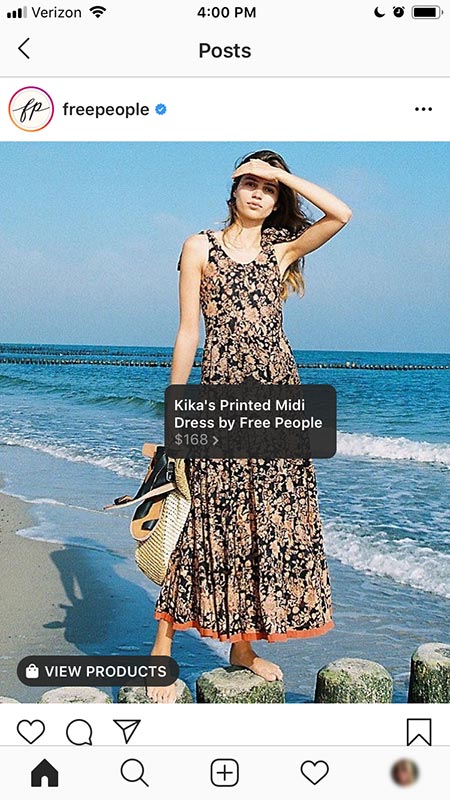
This photo is on their feed, and when you tap the photo, the dress name and price appear. Tap the price, and you’ll be taken to a screen with more information and the option to view the item on the Free People website. From this screen, you can also scroll and see more products.
By utilizing social commerce, you’re reaching new customers, reducing the barriers to purchasing, and dramatically shortening the sales funnel.
It’s easy to set up your business account for Instagram Shopping, and it’s a great way to improve your followers’ user experience. Before setting up shoppable posts, your profile must be set as a business account. You’ll need to connect it with your Facebook profile, which in turn needs to be connected to your catalog of products.
Making your Instagram feed shoppable will also grant you shoppable Facebook posts. To get shoppable Facebook posts, you first need to add a Shop Tab on Facebook and import your inventory through the Catalog Manager. Once Facebook has approved everything, you can start tagging products to make it even easier to convert social sales.
3. Shoppable Posts on TikTok
TikTok, the popular short-form video platform, has evolved beyond just being a source of entertainment; it’s now a significant player in the world of social commerce. TikTok Shopping is a feature that allows users to discover and purchase products directly within the app, seamlessly integrating e-commerce into the TikTok experience.
TikTok users can come across products while scrolling through their feeds. These products can appear in various forms, such as in-feed ads, organic product videos, or through TikTok creators’ content. When users click on a product in a TikTok video, they’re taken to a product listing page. This page provides details about the product, pricing, and an option to purchase.
TikTok now offers a streamlined checkout process, enabling users to make purchases without leaving the app. Payment and shipping information can be securely stored for future transactions. Many brands collaborate with TikTok creators and influencers to showcase their products. These creators often create engaging, authentic videos that highlight the product’s features and benefits.
TikTok’s format encourages quick and spontaneous engagement, making it conducive to impulse buying. Users can easily transition from seeing a product to making a purchase in a matter of clicks. For small businesses, TikTok Shopping presents an opportunity to access a vast and engaged audience without the need for extensive marketing budgets.
4. Social Media Messaging Apps
Each month, there are 1.3 billion active users on Facebook Messenger, and around 10 billion messages are sent between people and businesses via this messaging app. People like the convenience of shopping and getting service from home, but they still want the quick service that comes with face-to-face interaction at brick-and-mortar businesses. Messaging apps through social media can provide that prompt service.
WhatsApp, Facebook Messenger, and WeChat all offer businesses an inexpensive and easy way to provide direct, personalized contact and improve their customer experience. Try these tips to boost loyalty from your customers by making messaging and communication convenient and personable:
- Install a widget or plugin on your site so customers can directly connect with you while they’re shopping.
- Only enable chat when you know someone is available to respond.
- If there’s no one to answer, set an away message that lets your customers know when you’ll get back to them and direct them to an alternate form of contact.
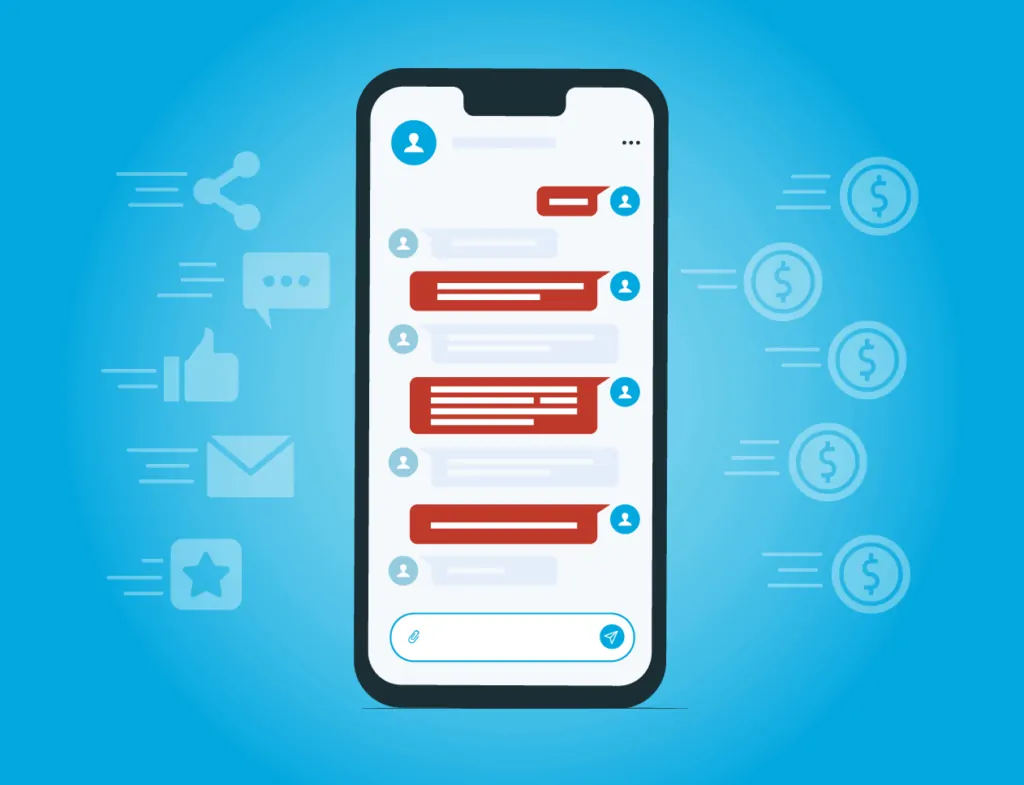
5. Social Media Stories
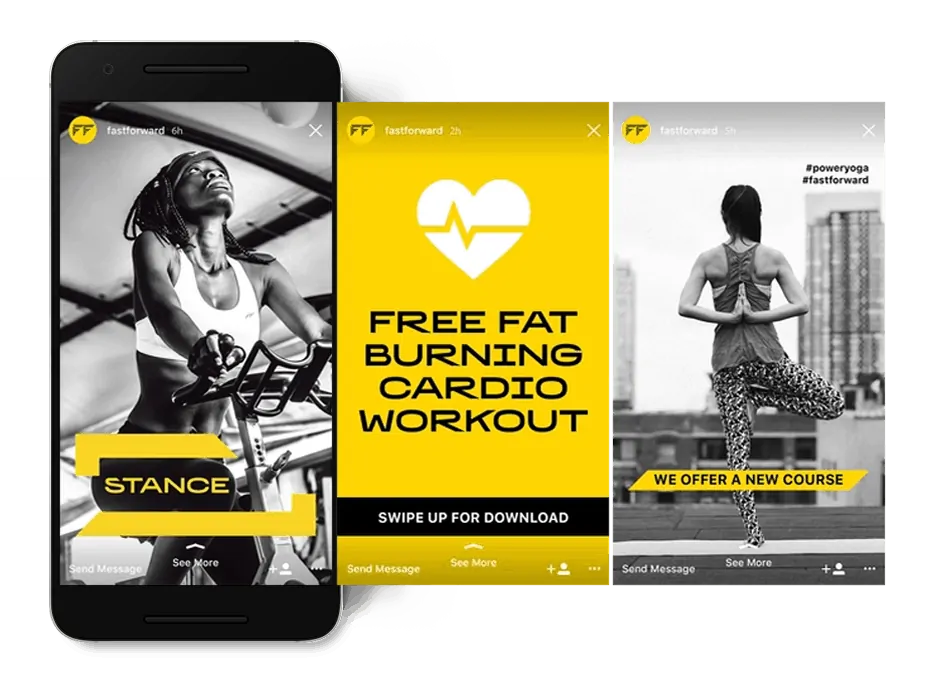
Social media stories are easy to use and are an incredible way to feature products, events, and even behind-the-scenes experiences. When you consider that one-third of the Instagram Stories with the highest amount of views come from businesses, it’s hard to ignore that Instagram Stories and Stories on other platforms are an effective form of digital marketing.
It is the exciting, fleeting nature of this medium that makes it so powerful. Consumers must stay on top of following their favorite profiles if they don’t want to miss special opportunities or information. Once you offer a behind the scenes look, discount code, or limited edition product through Stories, followers will be hooked on your updates – as long as you deliver.
Some easy ideas for adding value to your social media stories are:
- Search for customer content your business is tagged in and repost it onto your Stories
- Upload livestream video for people who didn’t see it live
- Utilize polls, Q&As, and quizzes to engage viewers with your brand and encourage their involvement in your content
- Create simple animations and short videos of your product or service in action
6. Social Media Contests
Social media contests can be an effective way to engage your audience and encourage customer buy-in. Think about the t-shirt cannon at a baseball game. The mascot runs around the field, getting the crowd pumped up for a free t-shirt. And it works because everyone is on their feet clamoring for the prize. After all, they’re already there, excited, and who doesn’t love free stuff?
You can use this same principle with contests for your online community – the audience is already there, they want to cheer for you, and they just need a small incentive and some hand waving to get excited and make noise.
When running a social media contest, be sure to think through the entire process carefully. There are many factors to consider, including:
- What goal do you hope to achieve?
- What platform will this run on, and how long will the contest last?
- What is your offer, and how much will it cost on your end?
- What are you asking contestants to do, and how will you manage their entries?
- How is the winner chosen, and how will you get the prize to them?
- What do you plan to do with the information you’ve collected from the contest?

Always remember to be honest and trustworthy when running a social media contest. Everyone loves free things, and most people are willing to give up a little bit of their time or personal details to get it from brands they trust and support.
7. Employee Engagement
If you have a business with multiple employees that are dedicated, engaged, and excited about the work they do, this can be a tremendous asset not only to your company in general but also to your online reputation.
When employees love their work and the company they do it for, they tend to talk about it. And they should be encouraged to talk about it online while tagging or mentioning the company and sharing interesting stories.
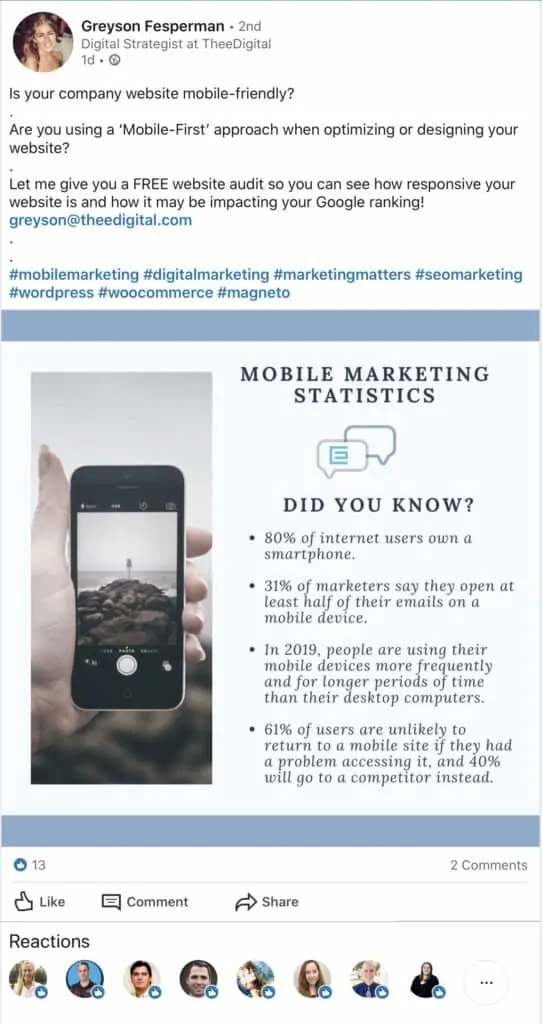
Employee engagement builds your online community in a natural and relatable way. LinkedIn is an excellent example of how this works. You can have a company page where you post events and share articles, but to get even more traffic and engagement, have your employees share and comment on these posts.
The LinkedIn algorithm values personal connections, so this spreads the news out to more connections, signaling to LinkedIn that the people behind the post are active and engaged with their company. You may also consider setting goals and rewarding employees who often share your content; that way, the people who work for you are even more excited about sharing company news with their network.
Before designating dedicated employees as torchbearers or ambassadors for your company, it is important to look at their personal pages and profiles to confirm they align with company standards. Check if they are verified, have their profiles filled out, and that their current and past content supports your business’s general views.
8. Influencer Marketing
Influencer marketing has proven to be popular and it’s not going away anytime soon. More and more businesses are taking this route to reach potential customers. Whether it’s through TikTok, Instagram, or YouTube, influencers are getting the job done.
Digital Marketing Trends Quick Tip: Instagram is still the number one influencer marketing platform, with TikTok a close second!
What is an Influencer?
An influencer is someone that people trust in a specific field, such as professional athletes, scientists, and even successful dog trainers. These people have a following online to promote their business, services, or message, and influencer marketing is tapping into these communities that are often large, active, and very loyal to the influencer they follow. Some examples are paying a local chef to post about using produce from your organic, urban farm, or sending your new sneakers to a basketball player to wear in pictures they post.
For influencer marketing to be effective, you don’t always need to work with a huge star or local hero. Search for people with growing audiences on new platforms, and notice how they interact with their followers. Having a small but dedicated audience is more beneficial for your marketing purposes than having a large but disconnected audience. See our section about micro-influencers below.
It is also important that your values align with those of the influencer so that your message and mission are appropriately communicated, and you can be confident that you’re working together to reach the same goal.
Use Influencers With Caution
This type of marketing is well known but comes with many rules and stipulations. For instance, it is required to disclose these types of financial relationships, so influencers use the #ad hashtag or sticker on social posts. Be sure to thoroughly research the rules in your state and enforce them for yourself, your team, and the influencer you’re working with so the audience is aware they are being marketed to, and no laws are broken.
You want to be careful when choosing influencers for your brand. If you choose the wrong people who don’t have a relevant audience or reach, this type of marketing isn’t going to work for you
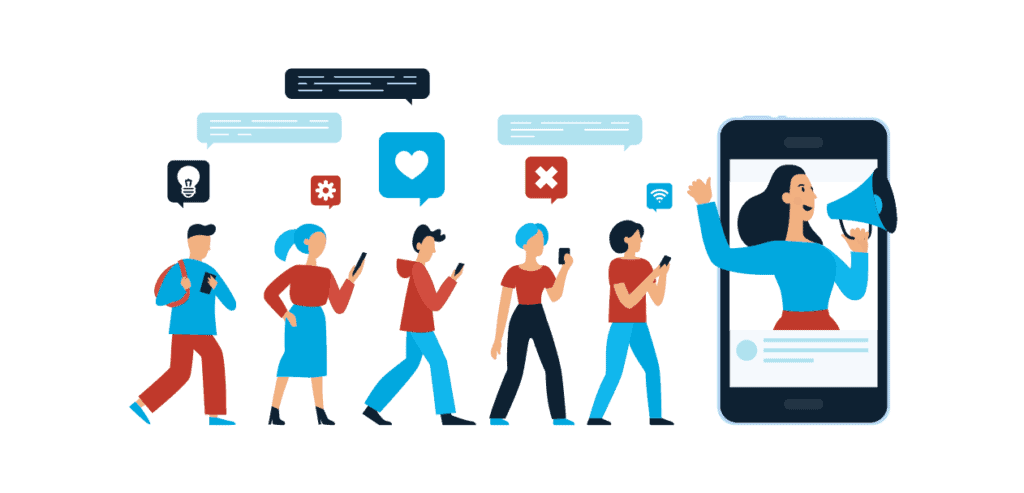
9. Micro-Influencers
Micro-influencers are individuals who have a smaller but highly engaged and loyal social media following, typically ranging from a few thousand to tens of thousands of followers. What sets micro-influencers apart is their ability to establish authentic connections with their audience, often within specific niches or communities.
For small businesses with limited budgets, collaborating with micro-influencers can be a cost-effective and impactful marketing strategy.
Real-World Example: Micro vs. Macro Influencers
Imagine a small, local artisanal bakery looking to increase its online visibility and attract more customers. They identify a micro-influencer in their city who is known for her passion for baking and has around 7,000 followers, mostly comprised of local food enthusiasts.
The bakery reaches out to the micro-influencer, offering to provide her with a selection of their freshly baked goods in exchange for her honest review and posts on her social media platforms. This collaboration is appealing because the influencer genuinely loves and appreciates artisanal baked goods, making her endorsement authentic.
The micro-influencer shares her experiences visiting the bakery, trying various products, and showcasing the bakery’s commitment to quality. Her posts resonate with her followers, many of whom are local foodies seeking recommendations for unique, local businesses to support.
Because the micro-influencer has established trust with her audience through consistent and genuine content, her endorsement carries weight. Her followers, who share similar interests, are more likely to trust her recommendation and visit the bakery.
Compared to working with macro-influencers or traditional advertising methods, collaborating with a micro-influencer is cost-effective for the bakery. It allows them to maximize their marketing budget and achieve targeted exposure within their local community.
10. Conversational Marketing
“To whom it may concern,” is out. “Hey,” is in! If you want to attract customers, you need to talk to them like you’re having a normal conversation.
Whether it’s through chatbots or instant messaging, more companies are talking with customers just like they would a friend. These human-centered interactions are more appealing than generic introductions or someone reading from a script. People can see right through that and it won’t make them want to do business with you.
The Latest Web Design Trends for 2024
1. Color Theory Redux
Vivid colors and gradients are expected to remain hot in 2024. The predicted trending color for 2024 is “chambray blue.” It has a soothing online appeal and is expected to define the spring and summer seasons. Choose eye-catching colors that compel visitors to take immediate action.

2. Gamification
Gamification is an emerging digital marketing trend that incorporates game features into a website. This is a bit of an oversimplification, but all the things that make games engaging, addictive, and fun are now being used as marketing strategies for businesses to increase customer loyalty, brand awareness, and sales.
Let’s think of gamification in the pre-digital age, like McDonald’s Monopoly game – buy certain products, collect game pieces, and win prizes. Simple and VERY effective. As 80 percent of smartphone users use their phones to play mobile games, it’s easy to see how gaming can be a draw in e-commerce, too.

Consider some of these examples:
- Spin the wheel, get a discount ranging from 10 percent to 50 percent off.
- Log in to the site 10 days in a row and get a prize.
- Scavenger hunt on the website encourages people to scan each page and look at new items – find everything and get a reward (a discount, free download, etc.).
- Use games in your ads to boost brand awareness.
Benefits of Gamification:
- Increased user engagement
- Get users to become engaged in your products or services
- Provides clear calls to action on how to convert
- Can be used for educational purposes
- Can be used for training purposes
- A great way to bring users back to a website
3. Visceral Experiences with AR and VR
Video content allows brands to connect with consumers on an emotional level. This brings us to the next V – visceral. The word visceral relates to deep, inward feelings, and advances in technology can let you tap into those feelings by creating virtual and augmented reality experiences.
You may remember when Facebook founder Mark Zuckerburg introduced Facebook’s new virtual reality platform Spaces to the world by virtually touring a hurricane-ravaged Puerto Rico. While this introduction was ill-advised in a PR sense, it’s an example of where digital marketing is headed in terms of offering deep, meaningful experiences. With access to VR and AR technology, brands are offering tours of facilities, taking users through creating products, and creating interactive 3D models so users can thoroughly examine products. As AR/VR technology becomes more accessible, even smaller businesses can get in on the action.
AR is already being used by major companies like IKEA. Using their app and AR, customers can see what a piece of furniture would look like in their space before purchasing (or even setting foot in a store)! Take a look at this shelving unit we tested in the TheeDigital conference room:

Benefits of VR and AR:
- It offers a more immersive shopping experience, which allows you to see how a product would look in your home, office, yard, etc.
- Helps the customer make buying decisions.
- Offers a more personalized experience.
- Increases brand awareness and user engagement.
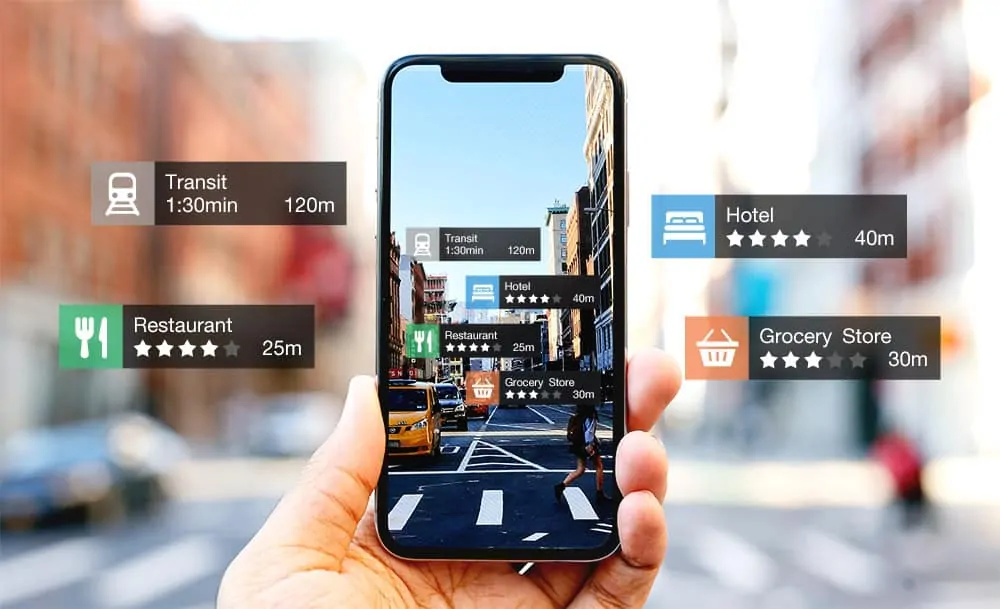
4. Video Marketing
Video launched to one of the top forms of content in 2019, and that trend shows no sign of stopping. Think about the benefits of video marketing:
- Customers respond well to videos.
- They increase engagement.
- It’s an effective way to show off new and existing products.
- It’s easy to put together and cost-effective, especially compared to graphics and copy.
Best of all, it offers one of the highest conversion rates of any form of marketing. But, like every other digital marketing trend, even continuing trends get updated. Video is no different.
- Live video, such as Facebook Live and Instagram Live, keeps people watching three times longer than standard video. It triggers the “fear of missing out” and hooks viewers in so they are the first to find some big news.
- Personalized video advertising is being integrated into emails to create more personalized messages, share information more quickly, and prevent your message from being lost in a wall of text. Emails with videos have a click-through-rate that’s 8x higher than traditional email.
- Product videos make customers feel more confident in what they’re buying, and they can offer a better sense of scale and specifications that text and pictures just can’t.
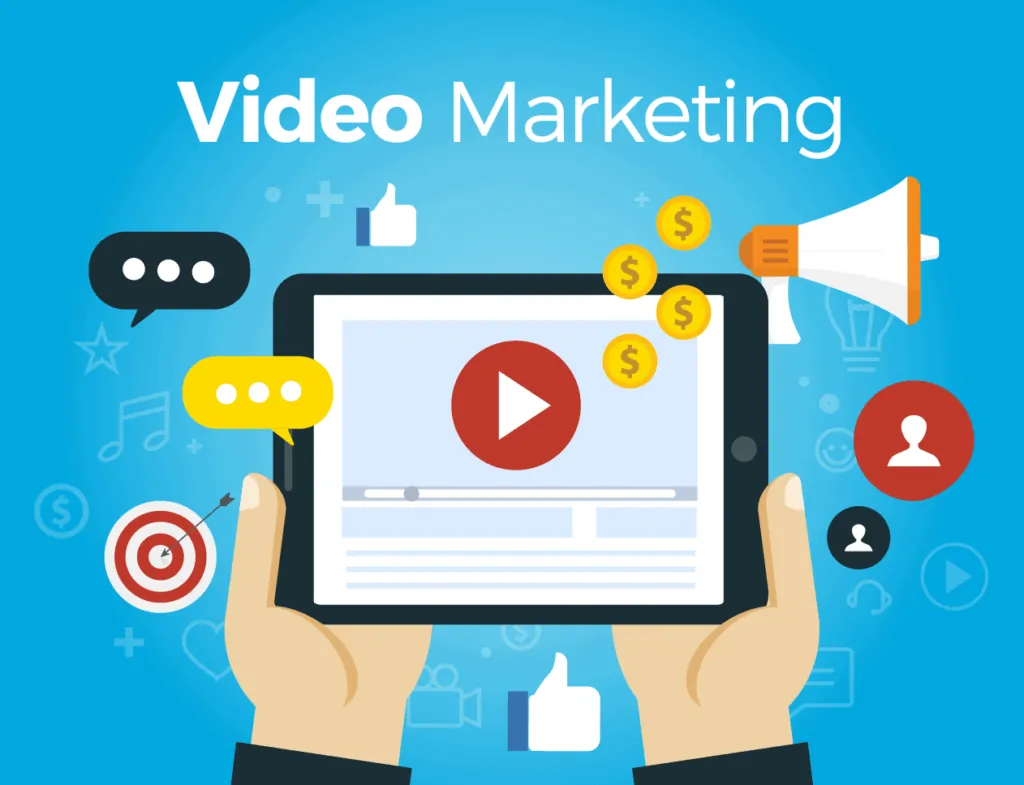
Just like aviator sunglasses and the little black dress, some things just don’t go out of style. Here are three online marketing trends that have been big over the past few years and will continue to be big in the digital marketing world.
1. Content Marketing
We’ve talked about marketing automation, email marketing, and video, so it’s certainly no surprise that content marketing isn’t going anywhere anytime soon. Content marketing is a two-fold benefit in which:
- You’re increasing your search engine ranking with high-quality content and strategic keyword usage to gain more traffic from a qualified audience.
- You’re providing valuable information that allows you to stand out as an authority while building trust, generating engagement, and gaining loyal customers.
The key to being successful with your content marketing comes from a few different factors. Primarily these are knowing and leveraging the keywords you want to rank for, providing content for every stage of your sales funnel from new visitors to loyal customers, and building engagement to create brand ambassadors who are sharing your content.
Some of the most effective forms of content marketing to help you meet these goals include:
- Blog posts to share company news and information related to your industry.
- New service pages that help you target keywords while also providing a closer look at your business.
- Videos and images to generate interest
- FAQs
- Email newsletters to continue engagement and keep customers informed
- Case studies to provide proof of your success.
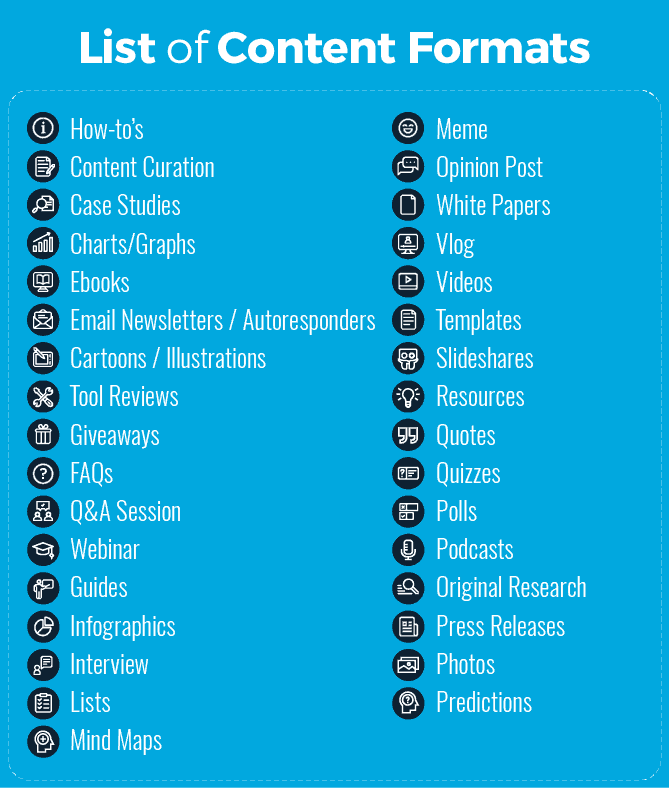
The Growth of AI in Content Marketing
Artificial intelligence has indeed revolutionized content marketing, offering powerful tools for content creation, optimization, and distribution. However, it’s crucial to strike a balance between automation and maintaining a human touch in your content strategy.
While AI can assist in content creation, it’s essential to ensure that the content doesn’t become robotic or devoid of genuine human engagement. Over-reliance on AI-generated content, without the human touch of creativity, empathy, and authenticity, can result in a disconnect with your audience.
Search engines like Google are increasingly discerning when it comes to content quality and user experience. Copying and pasting content generated from AI can hurt your SEO.
2. Create Personalized Content Experiences
With advanced data analytics, 2024 is the time to start creating personalized marketing experiences for your customers. Utilizing AI and appropriate data collection, you can quickly see valuable insights and patterns, gaining a better understanding of consumer behavior. With this, you can promote relevant content through targeted ads and email campaigns to customers that match certain customer behavior patterns, increasing the user experience and increasing sales.
3. User-Generated Content (UGC)
When appropriately moderated, user-generated content can be a powerful tool for your website both for SEO and for user experience.
User-generated content (UGC) doesn’t have to be complicated or intensive; it can simply be a user review on a product on your e-commerce site, a comment on a blog article, or a Q&A section where people can ask questions and get the answers they need. First, let’s look at the benefits:
- Content updates – Google loves new, updated content, and any time a comment, review, or question is added, the content is updated.
- Content length – Typically, longer content can improve search engine rankings because of the assumption that more content = comprehensive resource. For example, product descriptions can be short, but having customer reviews on the page can add needed length to boost SEO.
- Content Uniqueness – Duplicate content can hurt SEO, but for things like product descriptions, there’s little way to make your product stand out from the thousands of similar product descriptions, especially if you’re using the copy from the manufacturer. User reviews and comments can improve uniqueness, again, boosting your search engine ranking.
The key is to make sure you’re moderating any user-generated content. Certain settings for your blog can be implemented to cut down on spam, prevent link postings, and filter comments that include specific words. You can also moderate your UGC manually, though that may be challenging when you have massive amounts of comments and reviews.

4. Podcasting
Podcasting has witnessed explosive growth in the past decade or so, making it feel like everyone has one – including businesses. This audio medium offers a unique blend of personal connection, knowledge sharing, and entertainment. Podcasts also offer substantial benefits in terms of audience engagement and even provide your site with high quality backlinks.
The low barrier to entry and the ability to share experiences, knowledge, and stories have made creation in the audio medium accessible to everyone. This has led to a host of podcasts across various niches, from business and technology to pop culture and hobbies.
Podcasts can also be an excellent source of high-quality backlinks, contributing to a website’s SEO efforts. When podcasts are hosted on a website, show notes, transcriptions, and additional content related to each episode can be published on the same page. These supplementary materials often contain valuable information and keywords, which search engines appreciate.
5. Webinars
Webinars and live streaming, using platforms like Facebook Live, Instagram Live, and YouTube Live, are gaining popularity due to their interactive nature. They provide real-time engagement with your audience through live chats, Q&A sessions, and comments, fostering a sense of community and active participation.
Webinars are excellent ways to share knowledge, showcase your and your business’s expertise, and establish thought leadership in your niche.
Similar to podcasts, the content from these live sessions can be repurposed into various forms, such as blog posts, social media clips, or downloadable resources, extending its reach and impact.
What digital marketing trends do you predict will significantly impact your business in the upcoming year?
Digital marketing trends are constantly changing. We think the above tactics and ideas are going to be huge game-changers for the foreseeable future. What do you think? What marketing trends are you predicting? Tweet us your thoughts and predictions at @TheeDigital.




